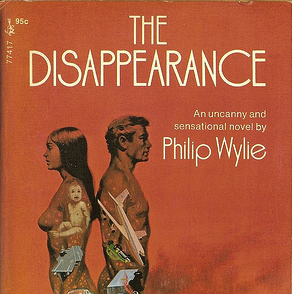
In PZ’s march by night through the ranks of unknown American writers, we pause today before the gaunt Easter Island statue of:
Philip Wylie.

Philip Wylie was a popular pundit, novelist, and science fiction writer of the 1940s and ’50s. His most famous book was called Generation of Vipers and caused a big stir in 1942. He became famous for the expression “Momism,” and struck a nerve in the area of what is now called gender politics. Although Wylie is sometimes characterized today as a “neo-conservative”, that doesn’t begin to do him justice. The rebellious son of an ideologically liberal Presbyterian minister, Philip Wylie was anti-authoritarian and angry, inveighing against every sort of sacred cow in that era. But he had one ‘ace in the hole’: he had suffered, and therefore sought help through psychoanalysis — twice! He was a preppy Jungian with a strong dose of Scripture in his background, and a most healthy attitude towards ‘Christianity’s nightmare’: sex. He was also a writer of visionary science fiction, including the famous novel (with Edwin Balmer) When Worlds Collide.
My favorite ‘Wylie,’ one of PZ’s Top Ten, is his 1951 novel The Disappearance. That is the big one, the distressing one, the perceptive one, the one that makes you want to stop reading every few chapters, and then forces you to pick it up again. The idea of The Disappearance — which has now become available again in an inexpensive paperback edition from Bison Press — is that on the second Tuesday of February 1950, at just shy of 4:05 pm Eastern Standard Time, all the women of the world disappear from the standpoint of the men, and all the men of the world disappear from the standpoint of the women. Due to a cause that is never explained, two parallel worlds are formed, with all their memories and circumstances intact from exactly that moment, one of women exclusively and one of men exclusively. The novelist then describes a period of four years in the lives of the women without their men and of the men without their women. History in each parallel world goes on wildly different tracks, allowing the author to make all sorts of interesting points concerning the differences, and also the similarities, of women and men.
There is nothing light about this novel. Wylie takes the women and their inward ‘evolution’ as far as it can possibly be taken. He does the same thing with the men. The picture is not pretty, for either sex. He also injects a fair amount of cultural Christianity into his tale, staging two important scenes inside the Episcopal Cathedral at Miami, where much of the action takes place.
Some contemporary critics make much of the ’50s gender-roles with which the story appears to begin. Those gender-roles, or conceptions, rapidly disappear! Where Wylie goes with his searing tale — and it is searing for all readers, female and male (each of us is in this book!) — is not only into our own time and the ideas that men and women currently hold about themselves; but beyond our time. Just when you think the writer has gone quite far enough in ripping the roof off our sexual selves, he goes farther. And he wrote this book in the late 1940s.
I think The Disappearance is one of the most interesting and fecund American novels ever written. If I were still in regular pastoral ministry and conducting weddings in church, I would require every single couple to read this extraordinary book. They might decide not to get married! Yet if they read the whole novel, and got to its noble and triumphant conclusion, they’d want to get married so fast they’d call Friar Lawrence. I’d give them his number! READ THIS BOOK.

COMMENTS













